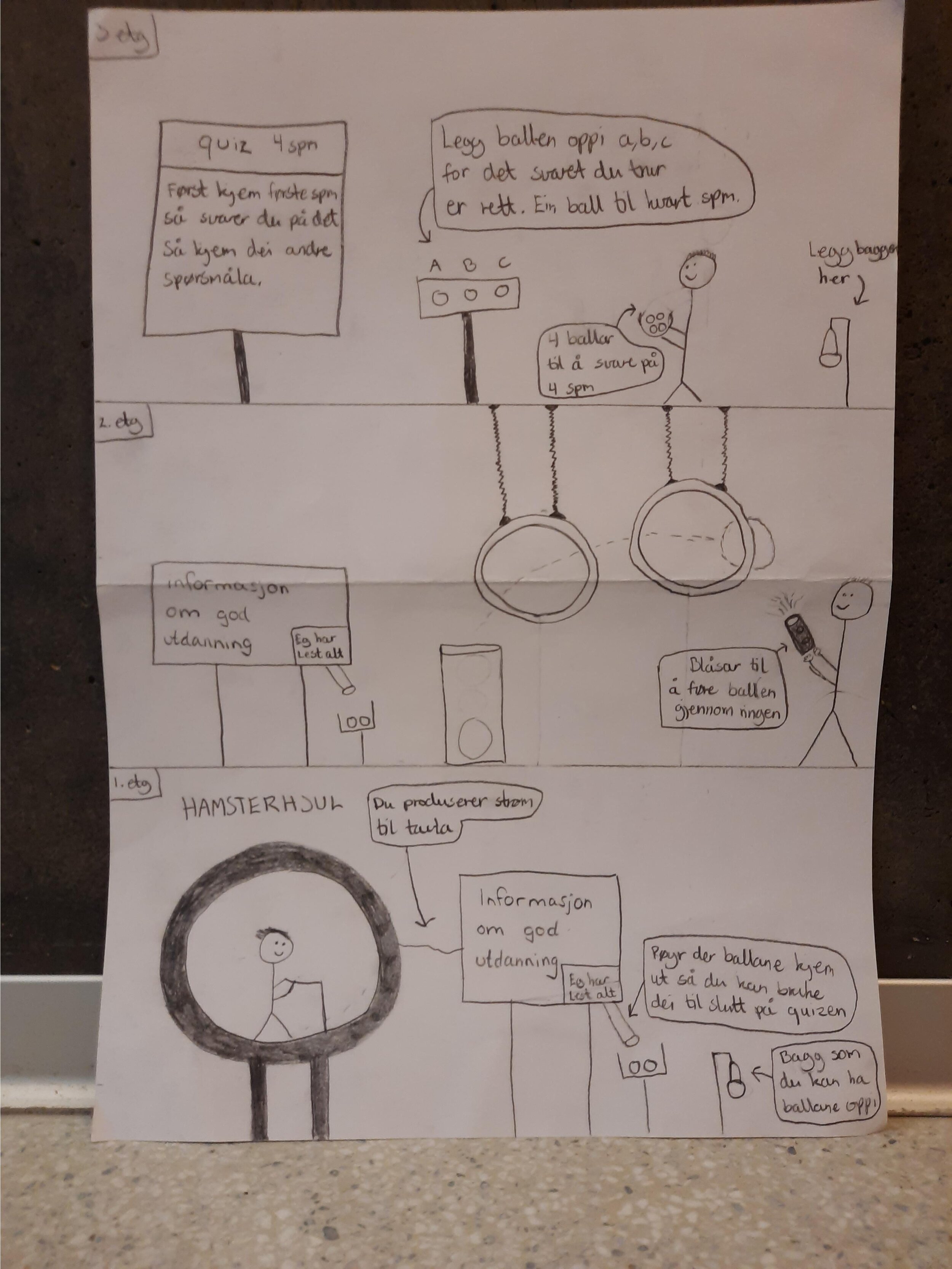Learn from each other
ViteMeir and Kaupanger students learn from each other
The atmosphere in the classroom at Kaupanger School is palpable. The 10th graders are practicing hard. In a few minutes they will present a project they have been working on for several months, but not to the teacher. They will present to a customer.
Outside the classroom, the outreach leader is responsible for ViteMeir , Åse Neraas , and Veronica Danielsen is the facilitator. They are at least as excited as the students. Soon Åse and Veronica will hear the students' suggestions for interactive installations that can be used in the stairwell in the science center.
- The only thing we know is that it will be linked to the UN's sustainability goals. That was in the mission statement. But beyond that, the students have been given free rein, says Åse.
Then the school bell rings. It's time for a short break before the presentations, and the students come out into the hallway. Some smile shyly at Veronica. Others are more forward.
- Are they the ones who come from ViteMeir ? Asks one of the students.
Åse and Veronica enter the classroom and strike up a conversation with teacher Eirik Menes. He says that the students are more engaged when they work on a project for someone external.
- It won't be the same when they just have to show it to us teachers. This project has given them a goal to work towards.
The bell rings again. The break is over, and the students find their seats. Then they begin. First, the students present a few selected sustainability goals. It quickly becomes clear that the students at Kaupanger are a socially engaged bunch. They are busy taking care of marine life, stopping climate change, and ensuring that everyone gets free education.
- I think it's great to see such committed and reflective young people. This gives me hope that we will be able to create a better and more sustainable world together, says Veronica.
The tension in the room is turning up a few notches. The students have finished presenting the sustainability goals they have chosen. Now they will present their own ideas for how ViteMeir can use sustainability goals in their exhibition.
"We propose a fishing simulator," says a student in the first group.
They have worked with marine life and are planning a course where you catch fish and dissect them using VR goggles. Inside the fish you will find pieces of plastic. The idea is to inform about how plastic that ends up in nature can be harmful.
Group two has focused on education. They present a course where you get information about education in different countries before completing a quiz. But the information doesn't come by itself. In order for this to become visible, you have to generate electricity by jumping on a huge hamster wheel. Then you have to use air blowers to guide a ball through several rings. Those who make it through the course get a prize. Maybe a love on a stick?
The last group is preoccupied with life on land. They propose a trail where you plant a tree digitally. Afterwards, you have to pump water to water the tree, and cycle to create sunlight. Finally, you can donate the tree to an organization that works against deforestation.
Åse and Veronica are impressed. They praise the students, but also ask critical questions.
- Love on a stick creates a lot of waste. Have you thought about whether we can have a more sustainable prize for the quiz? Asks Åse.
No, they certainly hadn't thought of that. Science teacher Eirik thinks it's good that the students are given critical questions.
- They benefit from having to think outside their own bubble.
Eirik is so pleased with the project that he wonders when they can start the next project. Åse and Veronica are also pleased.
"This is absolutely perfect, especially because the students are right in the middle of our target group. They are the ones who know best what is engaging," says Åse.
The collaborative project was a so-called Lektor2 project. Lektor2 is a national scheme that encourages schools to collaborate with professionals from the business sector. Such projects should be linked to science subjects, but can take many different forms.
- I hope we can get a lecturer2 project with several of the schools in Sogn og Fjordane. If anyone has ideas for a project, we would be super happy if they contact us, says Veronica











